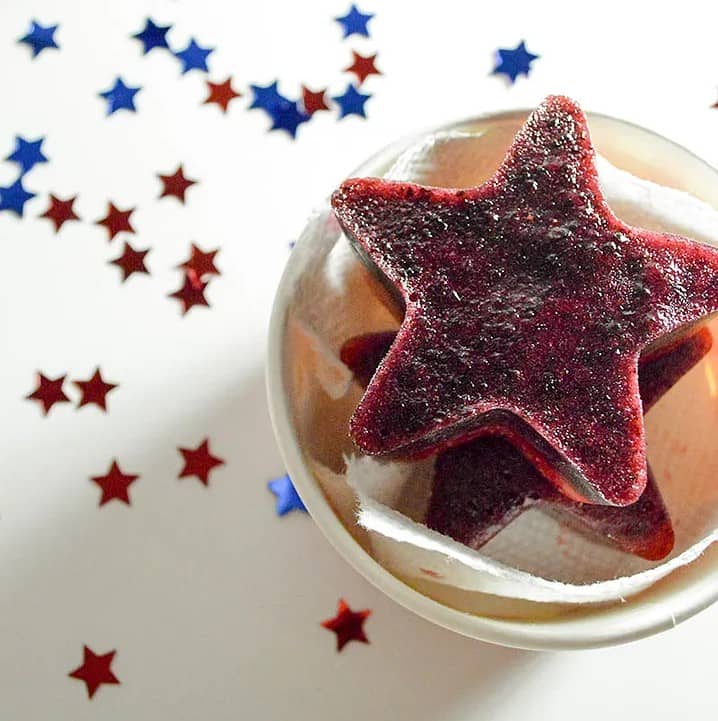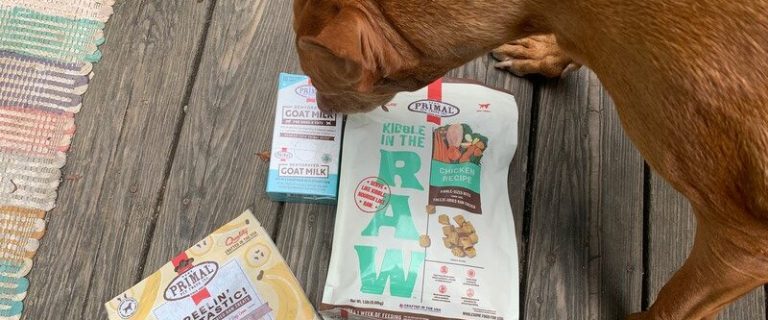You know that fruits are healthy for you, but have you ever wondered what fruits dogs can eat? For instance, can you feed your dog apples, kiwis, cherries, or grapes? Below, you’ll find a list of the safest fruits for your pups, as well as the top ten healthiest. Then, we’ll check out the ones you should NEVER give Fido. Let’s jump in!

LIST OF FRUITS DOGS CAN EAT
One thing I should mention before we start: Fruits aren’t on the list of common dog allergens. However, like people, any dog can develop an allergy to pretty much anything at any time. So, start with small amounts of these safe fruits, and give them to your dog one at a time. That way, if allergies do pop up you’ll have an easier time pinpointing the culprit.
Now, let’s dive into our list of all of the safe fruits for dogs, then we’ll take a closer look at the top 10!
- Apples
- Apricots
- Bananas
- Blackberries
- Blueberries
- Cantaloupe
- Coconut
- Cranberries
- Honeydew
- Kiwis
- Mangoes
- Oranges
- Papayas
- Peaches
- Pears
- Pineapple
- Pumpkin
- Raspberries
- Strawberries
- Watermelon
TOP 10 HEALTHIEST FRUITS TO GIVE YOUR DOG
Apples
Apples are high in Vitamins A and C, as well as calcium, fiber and phosphorus. They also have zero fat. Before slicing the apple for your dog, be sure to remove the stem, core and seeds. Apple seeds contain very small traces of amygdalin, “a compound that contains cyanide.”
It is fine for dogs to eat apple peels, but they have extra fiber. So, if your dog has a sensitive stomach, it is probably best to peel the apple before serving. You can serve your dog any variety of apple. It is best to feed your dog one or two slices of apple.
Or, you can bake them up into these yummy Apple Cinnamon dog cookies!

Bananas
Bananas are full of Vitamins B6 and C, as well as fiber, magnesium and potassium. They are also low in sodium. Bananas have a rather high sugar content (about 14 grams of sugar are in a medium-sized banana). So, only feed smaller dogs 2 or 3 slices of banana and feed larger dogs about half a banana.
While banana peels aren’t toxic to dogs, you shouldn’t give the peel to your dog because eating it may lead to vomiting or intestinal blockage. Besides serving fresh banana slices, you can freeze them first before peeling and slicing or you can mash the slices and mix it in with your dog’s food.
If you’re looking for a great treat for senior pups, try these homemade banana dog cookies.

Blueberries
Blueberries are packed with Vitamins C and K, as well as antioxidants, calcium, fiber, iron, magnesium and zinc. They are also low in calories, fat and sugar. Blueberries are a great snack for dogs because they are ready-to-eat treats.
Fresh blueberries are best, as are frozen ones as they make a cooling warm-weather snack. Try tossing your dog blueberries in the air for them to catch. Because they do have a good amount of fiber, start by giving your dog 2 or 3 blueberries to see how they tolerate them.
Dealing with a heat wave? Cool your pooch down with this easy strawberry and blueberry frozen treat recipe!

Cantaloupe
Cantaloupe features high amounts of beta-carotene, perfect for your dog’s immune system and vision. It is also a great source of Vitamins A, B6 and C, as well as fiber, folate, niacin and potassium. Do not give your dog the rind (outer skin) of the melon because its rough texture can cause intestinal damage.
This melon is slightly high in sugar (about 43 grams of sugar are in a medium-sized melon). So, do not feed cantaloupe to dogs who are diabetic or overweight. After removing the rind, chop the melon into small chunks, to avoid a choking hazard and serve your dog about 4 or 5 small chunks as a snack.
How cute are these cantaloupe dog treats?
Cranberries
Cranberries are high in antioxidants. They are also a great source of Vitamins B, C and E, as well as fiber and manganese. Cranberries can be given to your cooked, dried or raw but do not give them cranberry sauce because it contains a lot of sugar (about 22 grams of sugar are in one slice of cranberry sauce).
I love this treat recipe in the video below. It’s a great way to include your dog in your Thanksgiving feast.
Oranges
Oranges are a great source of Vitamins A, B1, B6 and C, as well as calcium, fiber, folic acid, iron and potassium. Oranges do have a rather high sugar content (about 17 grams of sugar are in one large orange). So, avoid feeding oranges to dogs that are diabetic or overweight.
Before feeding oranges to your dog, be sure to remove the rind (outer skin) and seeds first. This is because these parts of the orange can cause diarrhea and vomiting. You can feed your dog about 3 or 4 segments as a treat.
Pears
Pears are an excellent source of Vitamins A, B1, B2, C and E, as well as copper, fiber, folic acid, niacin, phosphorus and potassium. Fresh pears are best for your dog. Frozen pears are fine as long as they aren’t sugared. Before feeding pears to your dog, remove the core, skin and seeds.
Feed your dog one or two bite-sized pear chunks or mash a pear and mix one tablespoon with their dog food. You can also try them in these pear oatmeal bites:
Raspberries
Raspberries are rich in antioxidants and Vitamins B-complex, C and K. They are also a great source of copper, fiber, iron, magnesium, manganese and potassium. They are relatively low in calories and sugar.
Raspberries do have small amounts of xylitol, an all-natural sweetener is toxic to dogs, so feed them in moderation (typically ANY xylitol would be off-limits, but the amount in raspberries is so negligible that occasional raspberries won’t cause an issue in healthy dogs).
Dogs can eat fresh or frozen (plain) raspberries. Larger dogs can eat whole raspberries, but you should cut them in half or mash them for smaller dogs, so they don’t pose a choking hazard.
If you have a bounty of berries, try mixing them into these yummy muffins for dogs:
Strawberries
Strawberries are a good source of Vitamins B1, B6, C, E and K, as well as fiber, folic acid, iodine, magnesium, Omega-3 fats and potassium. They are also low in calories.
While fresh strawberries are best for your dog, frozen ones are fine, as long as they aren’t sugared, for a cooling snack. For a tasty treat, feed your dog 2 or 3 strawberries.
Watermelon
Watermelon is high in Vitamins A, B1, B5, B6 and C, as well as beta-carotene, lycopene, magnesium and potassium. It is also low in calories.
Before feeding watermelon to your dog, first remove the rind and the seeds because they can be difficult to digest. Feed your dog 3 or 4 cubed pieces of watermelon for a fun, refreshing snack.
LIST OF FRUITS DOGS CAN’T EAT
- Boysenberries– Feeding your dog boysenberries usually causes diarrhea.
- Cherries– The problem with dogs eating cherries is that the pit contains traces of cyanide. In addition, the pit may also result in bowel obstruction.
- Figs– First, figs are very high in fiber, which can cause your dog to have diarrhea. Second, fig plants contain ficin, which is toxic to dogs if ingested or comes in contact with a dog’s eyes, mouth or skin.
- Grapefruit– Grapefruit is very acidic, which can cause stomach upset. Grapefruit peels are a choking hazard and may also cause GI problems.
- Grapes– Grapes have compounds in them that are toxic to dogs.
- Lemons– Lemons are very acidic, which can cause stomach upset. Lemon peels are a choking hazard and may also cause GI problems.
- Limes– Limes are very acidic, which can cause stomach upset. Lime peels are a choking hazard and may also cause GI problems.
- Plums– The main concern with dogs eating plums is the pit. The pit is sharp, so it can easily damage your dog’s esophagus, intestines and stomach.
Again, remember to feed your pooch one fruit at a time to make sure that there are no issues (and that your dog actually likes it). Once you know which ones go over well, you can start mixing them into different treat recipes.
Which of these safe fruits dogs can eat does your pooch love the most? Share below!
Author
-
Deanna is a passionate animal lover and freelance writer. She lives with her Chi dog and a ragdoll cat. When she’s not writing, Deanna loves listening to country music or watching Dancing With The Stars.
View all posts


